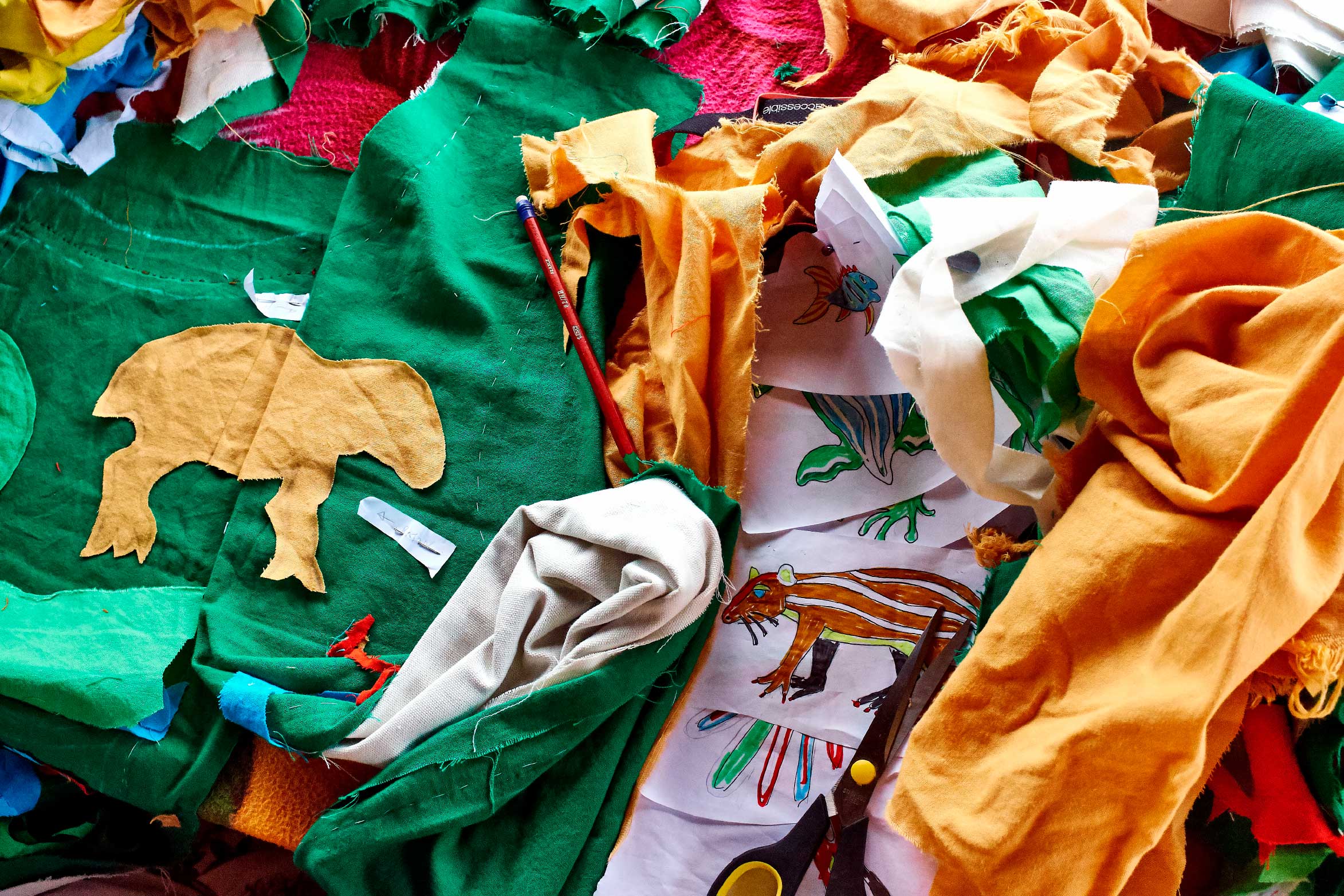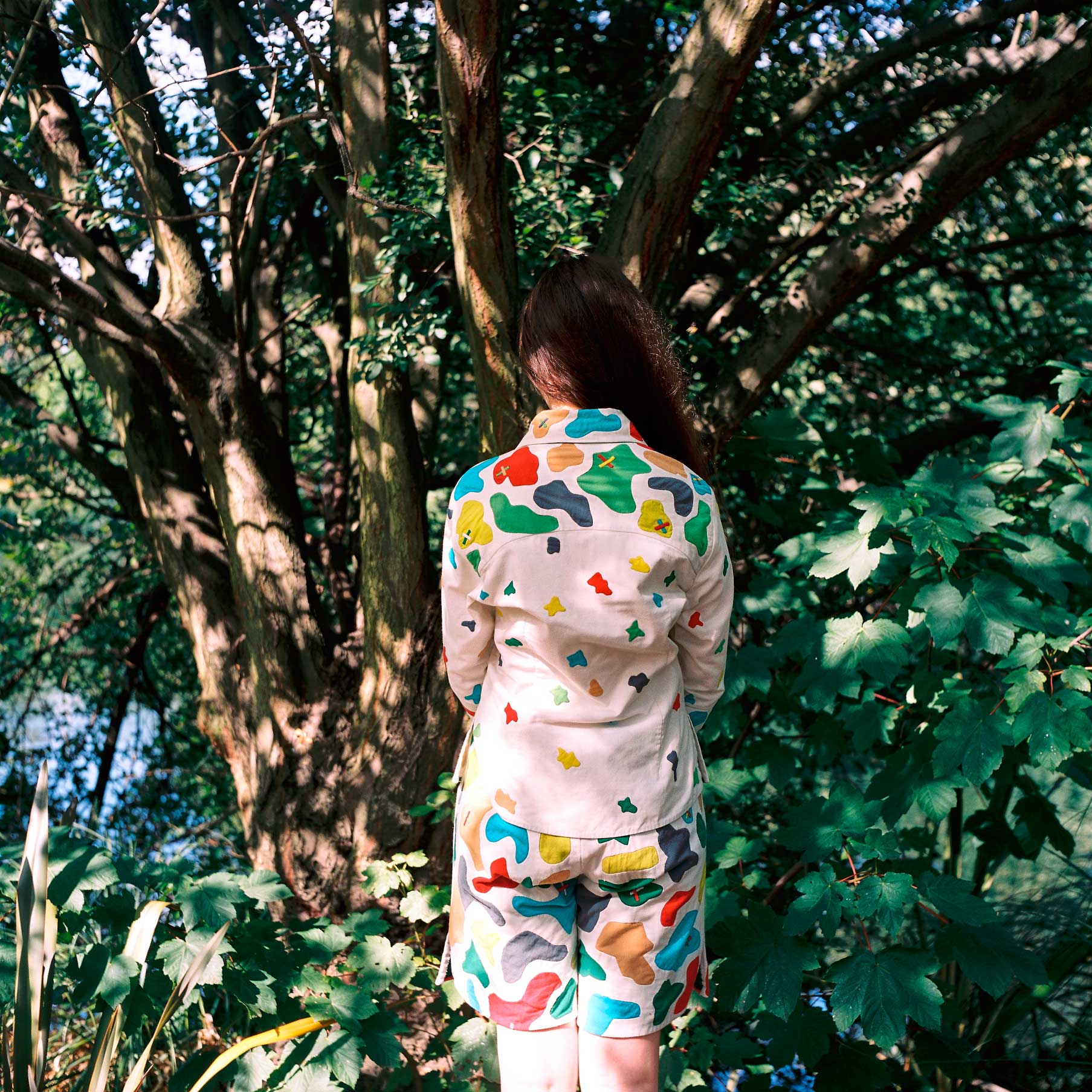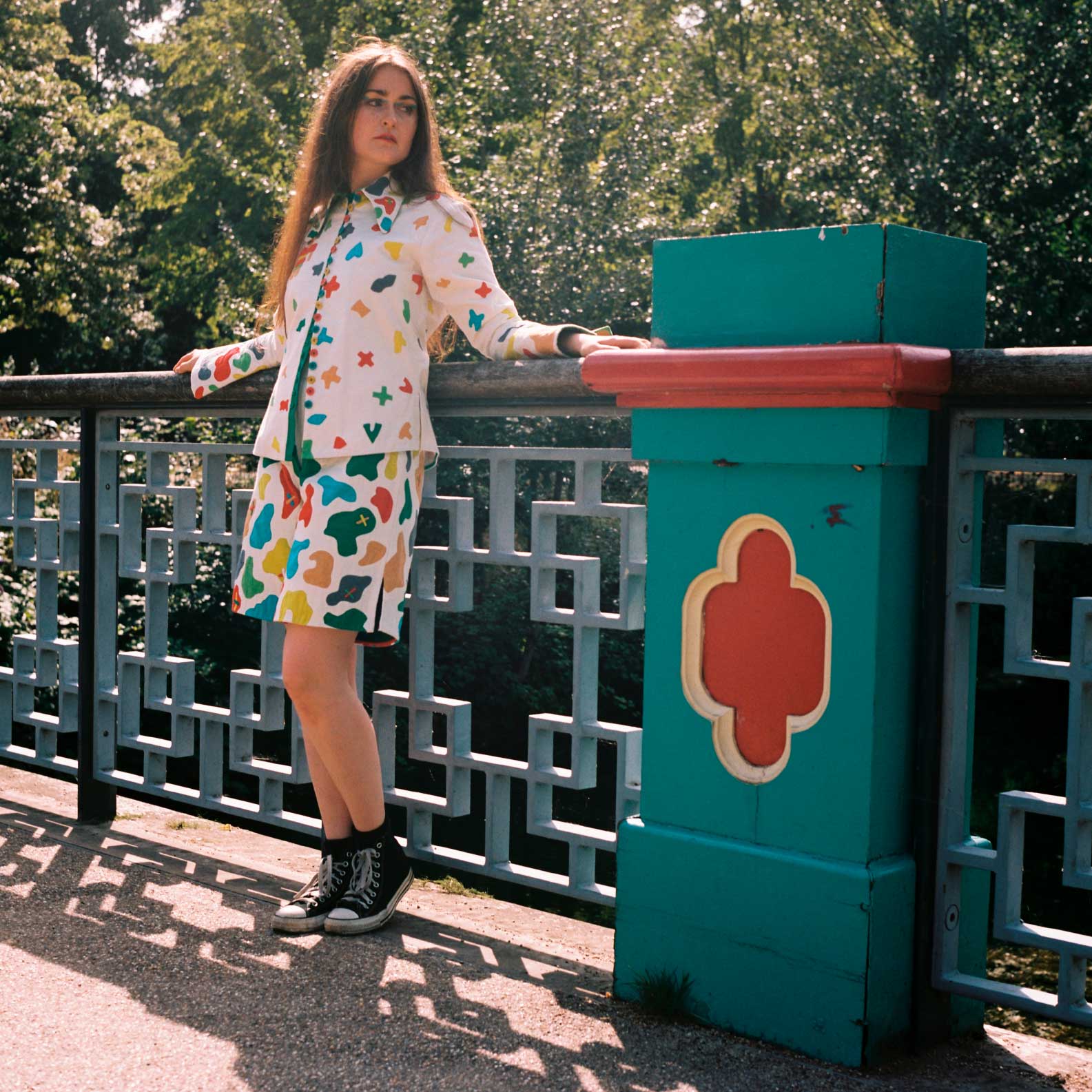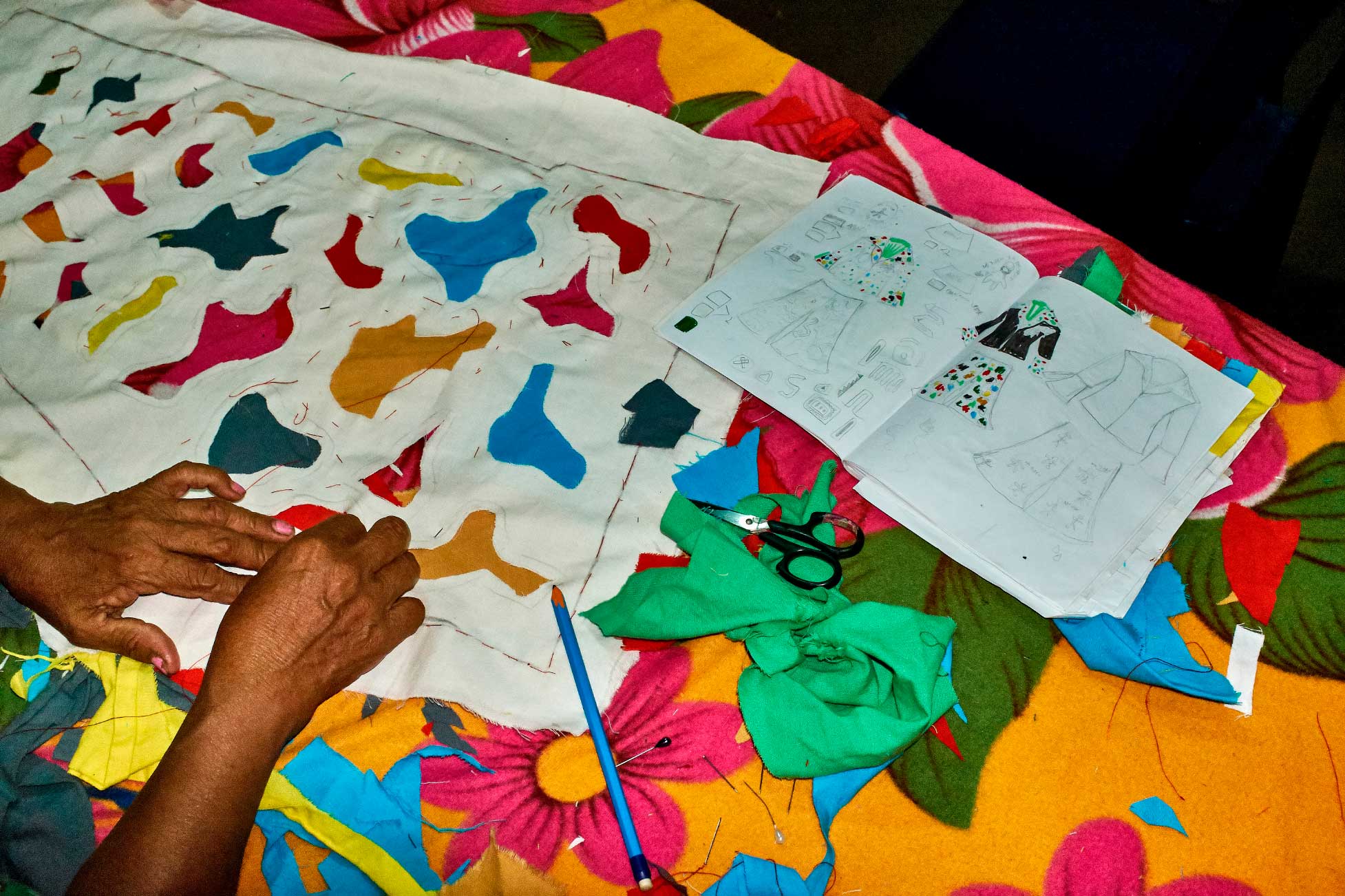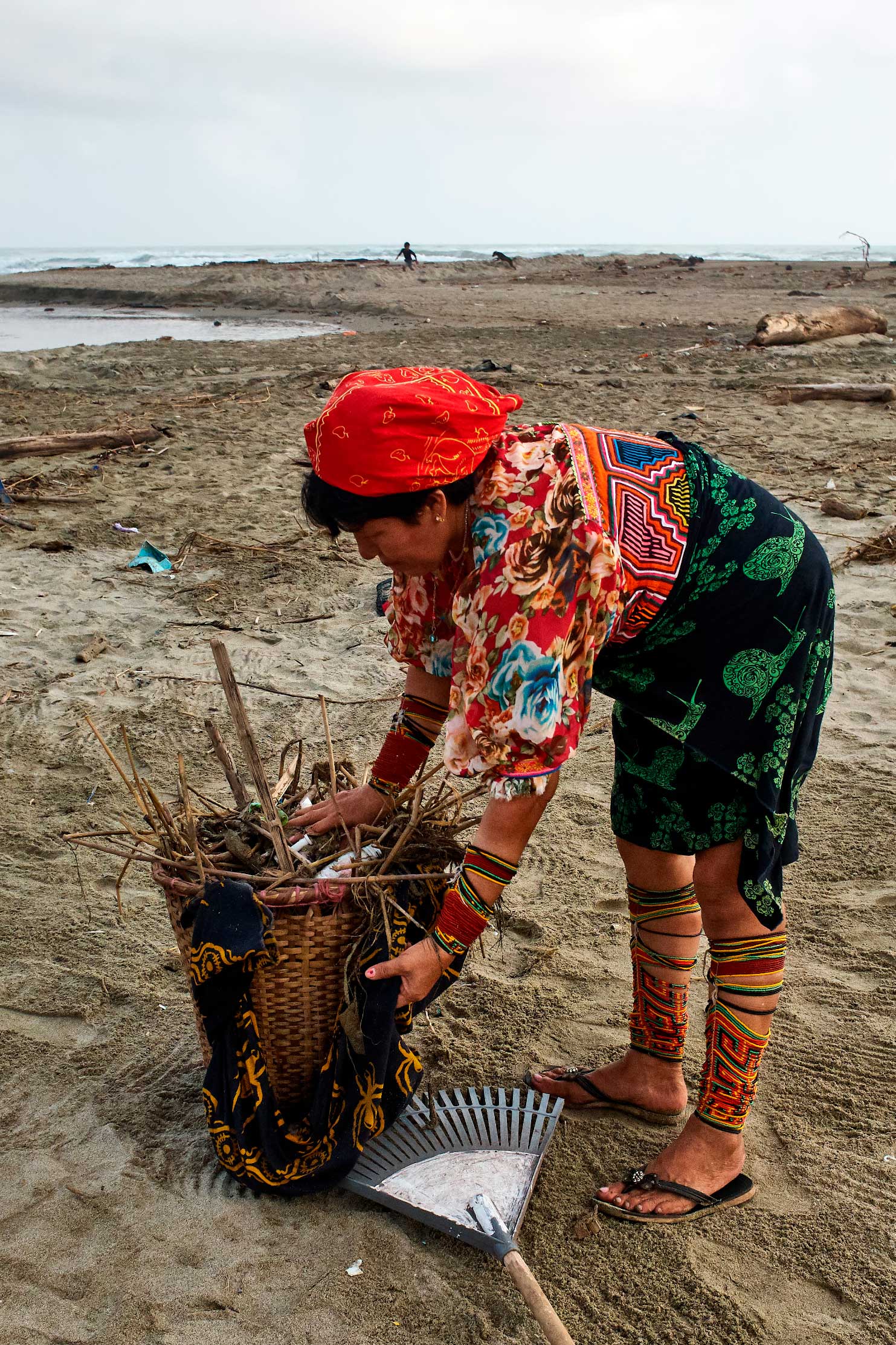NISKUA MOLA
NISKUA MOLA is an ongoing project with indigenous artisans in the remote village of Guna Yala, Panama, who are known for their Mola applique and embroidery. The project is possible thanks to the support from La Wayaka Current and Crafting Futures scheme by British Council and Craft Council UK.
The project’s aim is to help a group of 30 indigenous artisan women to set up a textile cooperative, and to research ways in which craft can be used as an intersectional tool for climate change education and action, for both the makers and the viewers.
Work with the cooperative involves sharing numerous informative skills, capacity, creativity and design development workshops to with time ensure artisans’ total autonomy when operating on a global market, working towards rethinking the designer-artisan hierarchies so prevalent in the fashion industry. The project is also helping to start community research on locally grown cotton and natural dyes, as well as helping the artisans to transition to a more localized sustainable material supply chain route, as previously all that was accessible to the community were cheap toxic fabrics from China.
The project’s aim is to help a group of 30 indigenous artisan women to set up a textile cooperative, and to research ways in which craft can be used as an intersectional tool for climate change education and action, for both the makers and the viewers.
Work with the cooperative involves sharing numerous informative skills, capacity, creativity and design development workshops to with time ensure artisans’ total autonomy when operating on a global market, working towards rethinking the designer-artisan hierarchies so prevalent in the fashion industry. The project is also helping to start community research on locally grown cotton and natural dyes, as well as helping the artisans to transition to a more localized sustainable material supply chain route, as previously all that was accessible to the community were cheap toxic fabrics from China.
STORIES FROM THE FARAWAY LAND: ARMILA
“STORIES FROM THE FARAWAY LAND: ARMILA” collection has several purposes: it’s a collaborative community experiment, it is also the very first clothing line ever made by the Niskua Mola cooperative and furthermore it also serves as a case study for research on how can craft be used as a tool for active engagement of illiterate communities with complex climate change topics. Each piece in the collection is dedicated to a particular issue that is affecting these makers’ homelands, and the co-designing and making process of these garments was used as a medium for discussion, exchange and education regarding these topics on a community level.
Applique designs are based off the drawings made by Guna children during environmental art workshops composed specifically for the local school, keeping the design origin in the ownership of the community itself from the very start. The collection is co-designed and made together with the cooperative. All pieces are made out of Latin American organic cotton as a monomaterial for easier recyclability, and dyed with low-impact dyes in the dye house with a water-management filtering plant.
Applique designs are based off the drawings made by Guna children during environmental art workshops composed specifically for the local school, keeping the design origin in the ownership of the community itself from the very start. The collection is co-designed and made together with the cooperative. All pieces are made out of Latin American organic cotton as a monomaterial for easier recyclability, and dyed with low-impact dyes in the dye house with a water-management filtering plant.
RISING WATERS DROWNING HOMES
In Guna Yala water rises at a speed of 1 cm a year. This forces many island villages to already start their move into the mainland coast, all done without any financial assistance from the Panamanian government, as Guna Yala is a politically autonomous indigenous area and many of these villages are too inconveniently located for tourism purposes for the government to be interested to invest into them. Moving inland means cutting forest and loosing the community’s familiar identity and cultural traditions. In Guna villages, being very packed communities that only keep on growing due to lack of access to proper birth control, the houses are built so close to each other on the islands, that many families living on the edge start cutting coral reefs that serve as a natural protection from waves - just to turn them as the ground for more huts, that way expanding their islands yet removing the natural protection from the increasing water rise.
CALL UPON THE RAINBOW IN CASE OF DROUGHT
Inconsistent tropical rains create long periods of drought and very hot suffocating days, causing a disbalance in the local flora and fauna. On such days women often embroider traditional rainbow pattern, the exact interpretation of which you can see on the sleeves of this jacket. Through the meditative act of stitching a mola one zig zag at a time they call upon the rain. The pockets also capture the most loved symbol ‘el camino de caracol’ – the path of the snail, symbolizing the importance and necessity of natural cyclicity of life and its seasons.
FLOODED MOUNTAINS
Water pipes of the village break every time it rains so 5 men have to go into the muddy jungle to fix the pipe, while the whole village of 600 people is left without water. The pipes break due to the immense pressure created by the overflowing river right after the rain. The pipe is the only source of household water supply for the whole community. The village is in dire need of replacing these pipes but it would cost them over 3 million dollars, money that is absolutely unattainable for Armila without wider governmental or NGO support, that is very difficult to obtain due to the zone’s politically autonomous status.
PLASTIC SHORES
Plastic pollution from the ocean is a big issue in the whole area of Guna Yala and especially in the village of Armila, as this community’s coast is located on the open oceanfront. Plastic produced by the companies from the well-off Western side of the world ends up encircling these indigenous peoples lands. With no access to any waste management systems or investments, they are left surrounded by these ever growing floating piles of trash. The endangered leatherback turtles, which have chosen Armila’s shores as their only spot for nesting on the whole stretch of Panama and Colombia, often mistake trash for seaweed and plastic bags for their favorite meal –jellyfish, resulting in early deaths and decreasing population. The what naturally was a beautiful coast is now a petrifying sight that looks more like an apocalyptic slum rather than the picturesque ocean view and it’s even nastier deep down in the waters, filled with flip-flops and pampers.
LOSS OF BIODIVERSITY
Our current species extinction rate is 10 000 times faster than the natural extinction rate with 0.1% of species being lost every year, which makes it over 10 000 species going extinct yearly. This dress portrays some of the creatures that Guna people believe to be going extinct in the area. Climate change has been affecting a lot of favorite animals in the area, especially the beloved endangered leatherback turtles so appreciated in the village of Armila.
SACRED LAND IS NOT A TRASH LAND
This blouse depicts a self-portrait of Predespinda, one of the most hard-working and helpful Niskua Mola cooperative members. She is telling us “to not drop our trash”, embroidered amidst floating litter formations with her wearing a traditional Guna dress with a woven basket made especially for beach cleaning trips. There are no governmental programs that help the isolated non-touristic areas of Guna Yala such as Armila and there is absolutely no waste management or pick up systems in place. The only way the community is able to get rid of waste is to burn it in an open fire, which produces toxic gases and spreads throughout the land. These fires are often set up right inside their homes, toxically polluting the village streets. Through making of this garment the women were able to learn about and discuss first simple steps they could take in their community such as beginning to compost, recycling of paper and taking metal cans for recycling to Colombia. Now the cooperative have started doing regular beach cleaning trips, serving as an example for the whole village.



















































